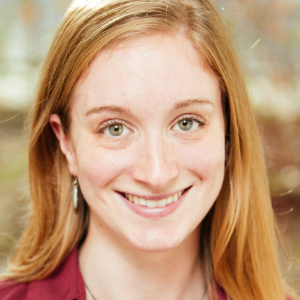May 03, 2020
SPARC_Duke_Grill_OT2-OD025340_HumanVagusNerve_Claudin1IHC_Morphology
- Nicole A. Pelot1,
- J. Ashley Ezzell1,
- Gabriel B. Goldhagen1,
- Jake E. Cariello1,
- Kara A. Clissold1,
- Warren M. Grill1
- 1Duke University
- SPARCTech. support email: info@neuinfo.org

Protocol Citation: Nicole A. Pelot, J. Ashley Ezzell, Gabriel B. Goldhagen, Jake E. Cariello, Kara A. Clissold, Warren M. Grill 2020. SPARC_Duke_Grill_OT2-OD025340_HumanVagusNerve_Claudin1IHC_Morphology. protocols.io https://dx.doi.org/10.17504/protocols.io.6fzhbp6
License: This is an open access protocol distributed under the terms of the Creative Commons Attribution License, which permits unrestricted use, distribution, and reproduction in any medium, provided the original author and source are credited
Protocol status: Working
We use this protocol and it's working
Created: August 12, 2019
Last Modified: May 03, 2020
Protocol Integer ID: 26841
Keywords: Vagus nerve, nerve morphology, human vagus nerve, claudin-1, endoneurium, perineurium, epineurium, fascicles, image segmentation
Abstract
The protocol describes immunohistochemistry with anti-claudin-1, imaging, image segmentation, and image analysis methods to quantify human vagus nerve morphology.
Materials
- Microscope slides with paraffin slices
- Xylene
- Ethanol
- Deionized water
- HIER Buffer L (Thermo, TA-135-HBL)
- H2O2
- Tris buffer
- Tris Tween buffer
- DAKO Protein Block (X0909)
- Antibody Diluent OP Quanto (Thermo, TA-125-ADQ)
- Rabbit anti-claudin-1 (Abcam, ab15098)
- Biotinylated SP-conjugated Affinipure goat anti-rabbit IgG (H+L) (Jackson, 111-065-144)
- ABC Elite (Vector, PK-6100)
- DAB chromogen (Thermo, TA-125-QHDX)
- Harris hematoxylin (Thermo, 6765003)
- DPX mountant (Electron Microscopy Sciences, 13512)
- Microscope with color camera
- Nikon's NIS Elements
- Matlab
Immunohistochemistry
Immunohistochemistry
Bake slides with sections of paraffin-embedded vagus nerve at overnight at 60oC and then cool overnight.
Deparaffinize the slides and hydrate them to distilled water: xylene (2x 6 min), 100% ethanol (5 min), 95% ethanol (4 min), 70% ethanol (3 min), deionized water (2x 1 min).
Perform heat-induced epitope retrieval (HIER) at 120oC for 30 s followed by 90oC for 10 s, using a buffer with pH 6.0 (Thermo, TA-135-HBL).
Cool for 20 min at room temperature.
Rinse in deionized water (2x 2 min).
Block with 3% H2O2 diluted in deionized water for 10 min.
Rinse in deionized water (2x 2 min).
Rinse in Tris buffer (1x 2 min).
Block using DAKO Protein Block (X0909) for 10 min at room temperature.
Apply the primary antibody (rabbit anti-claudin-1, Abcam, ab15098) diluted in Thermo Antibody Diluent to a concentration of 1:50, and incubate overnight at 4oC.
Rinse in Tris Tween buffer (2x 2 min).
Rinse in Tris buffer (1x 2 min).
Apply the secondary antibody (biotinylated SP-conjugated Affinipure goat anti-rabbit IgG (H+L), Jackson, 111-065-144) diluted in Thermo Antibody Diluent to a concentration of 1:500, and incubate for 1 hour at room temperature.
Rinse in Tris Tween buffer (2x 2 min).
Rinse in Tris buffer (1x 2 min).
Apply ABC Elite (Vector, PK-6100) at a concentration of 1:50 for 30 min at room temperature.
Rinse in Tris Tween buffer (2x 2 min).
Rinse in Tris buffer (1x 2 min).
Apply DAB chromogen (Thermo, TA-125-QHDX) for 1 min at room temperature.
Rinse in deionized water (2x 2 min).
Counterstain using hematoxylin.
Dehydrate, clear, and coverslip using DPX mountant.
Microscopy
Microscopy
Each sample was imaged at 10x using a Nikon Ti2 microscope with a Photometrics Prime 95B-25MM camera (Nikon Instruments Inc.). We selected the best of four slices for each sample based on the quality of the slice (no tearing or fraying).
Image Segmentation
Image Segmentation
We used Nikon's NIS Elements software (v5.02.01, Build 1270) to segment human vagus nerve immunohistochemical micrographs (anti-claudin-1) using the General Analysis RGB tool.
For each image, we selected preprocessing steps, such as smoothing and sharpening.
For each image, we selected ranges of hues, saturations, and intensities to values that identify the perineurium and different values to identify the entirety of the nerve.
For each image, we selected postprocessing steps, such as setting a minimum size criterion (eliminate small off-target regions), smoothing, cleaning, closing, and filling holes.
We made manual adjustments as needed, including manual deletion of off-target regions and filling of target areas that had not been captured.
We converted the binary segmented image into “Graticule Masks”, binary images saved as TIFs.
Image Analysis
Image Analysis
We imported the TIFs into Matlab and generated a data structure of the x and y coordinates of the pixels for each closed boundary of the loaded binary images using the bwboundaries function.
We stored the pixel coordinates with indexing that assigns a fascicle number, which were then checked so that both the interior and exterior perineurium trace relate to the same fascicle.
We scaled the pixel coordinates to microns using the segmented scale bar.
We calculated cross-sectional area of each fascicle (inner perineurium and outer perineurium traces) and nerve using Matlab’s polyarea. Effective diameter (for a nerve or fascicle) is the diameter of the circle that has the same cross-sectional area as the raw trace. The perineurium thickness is half of the difference in effective diameters of the inner and outer perineurium traces.
